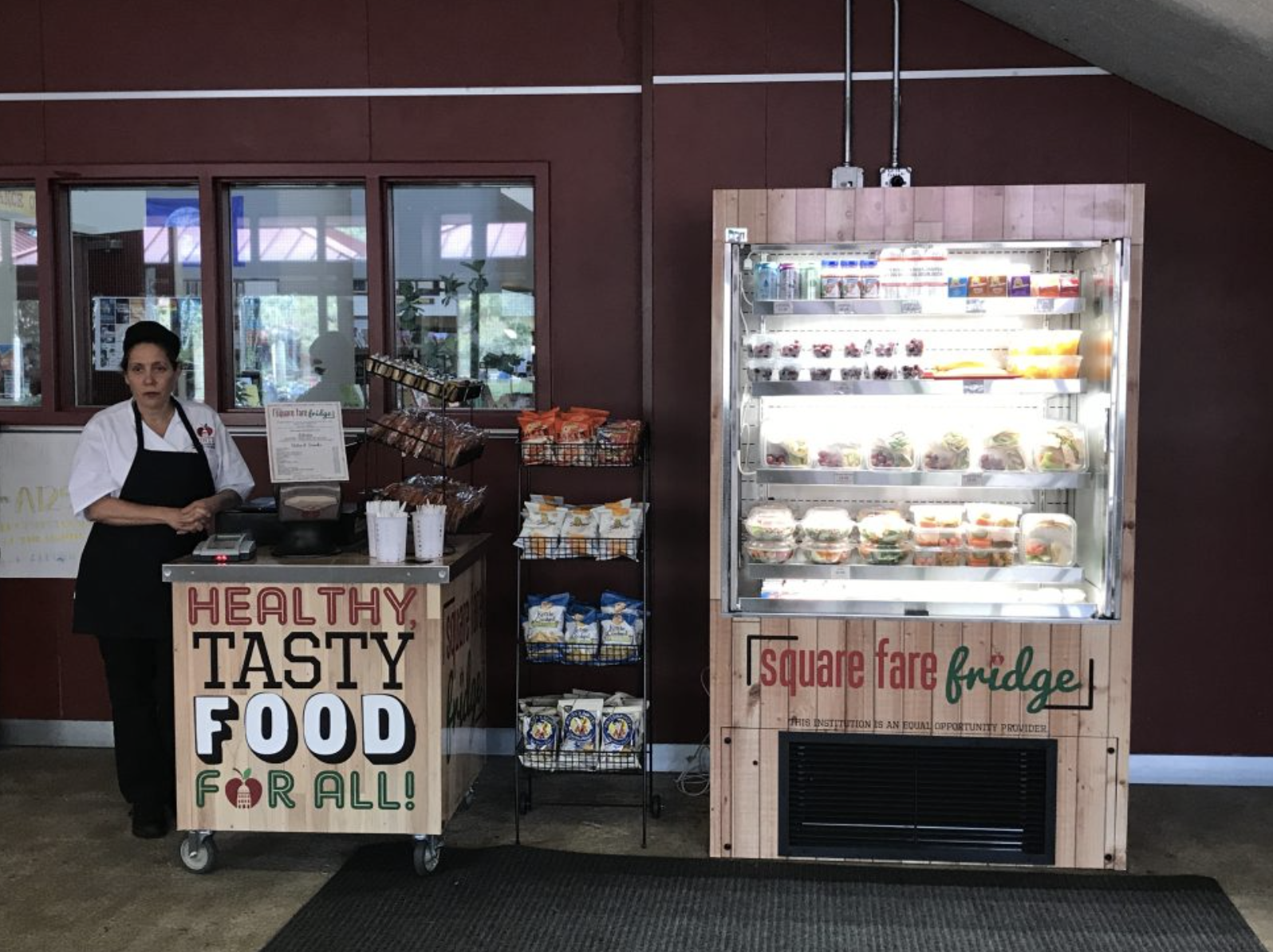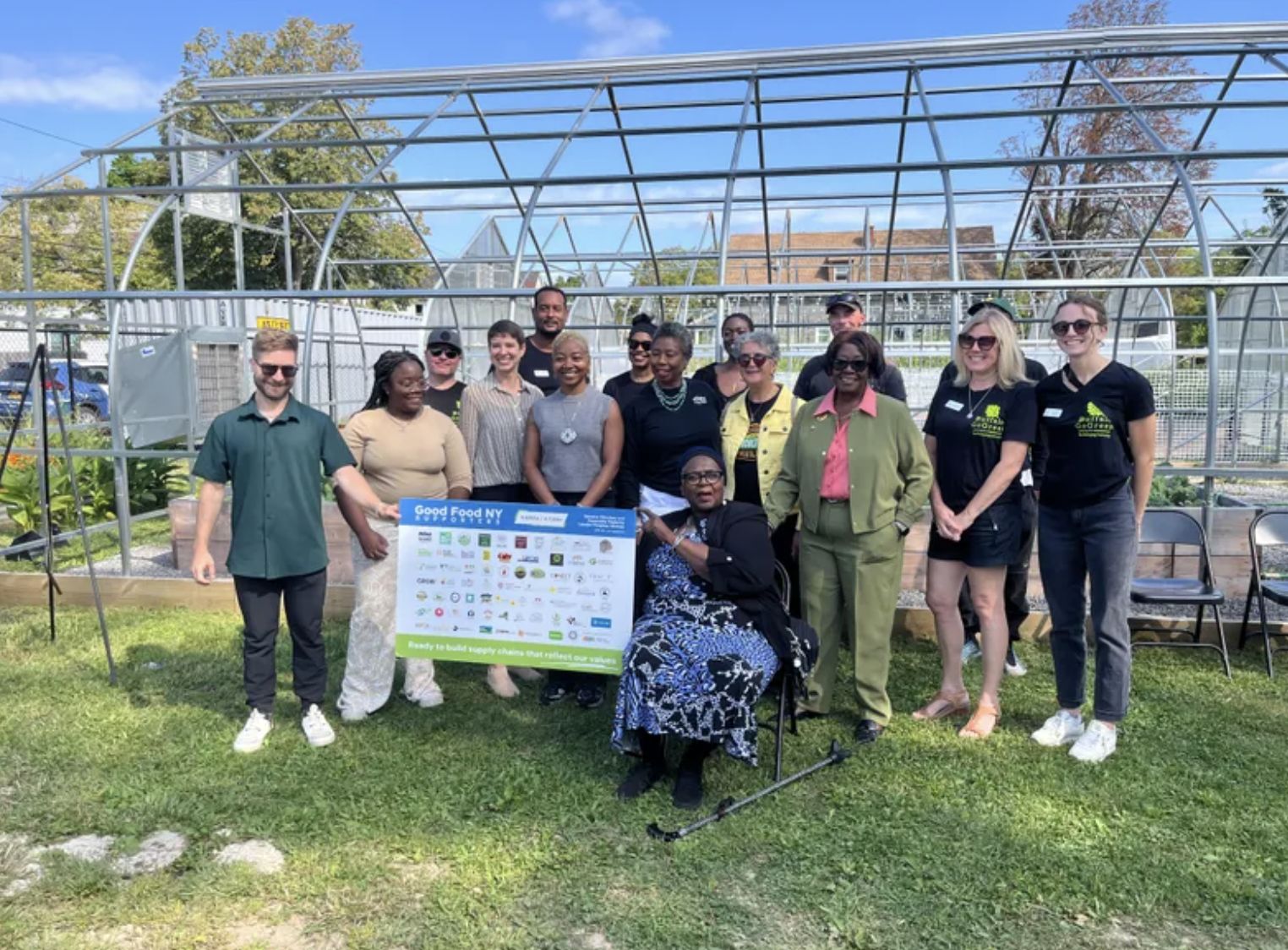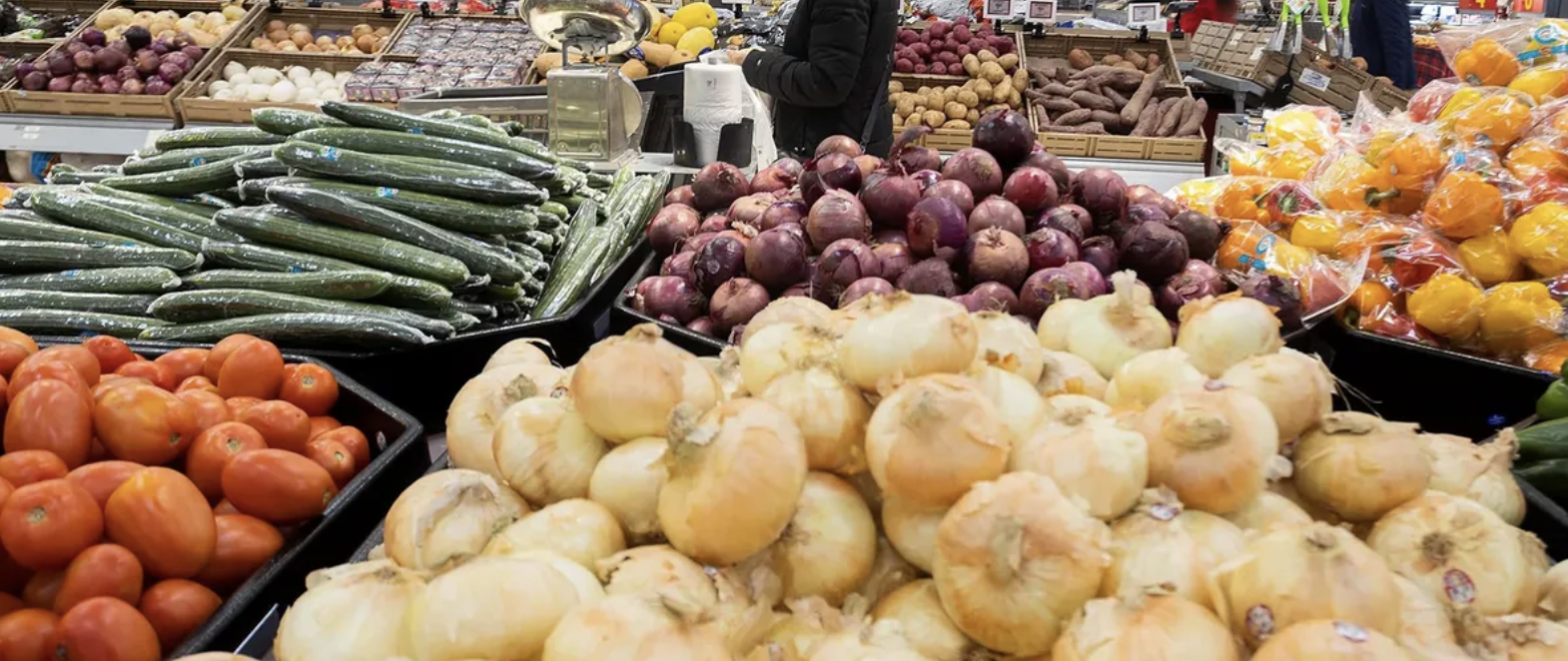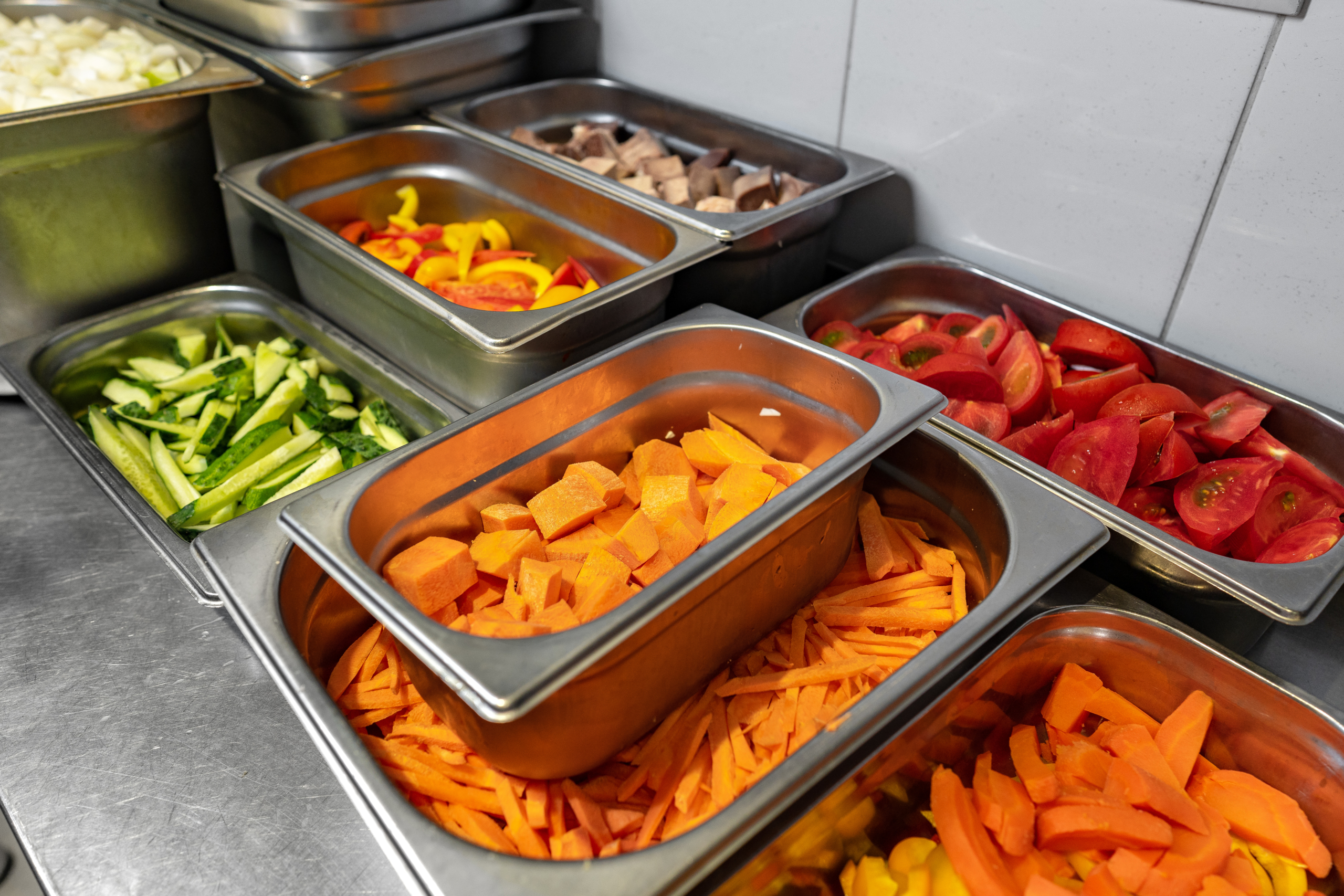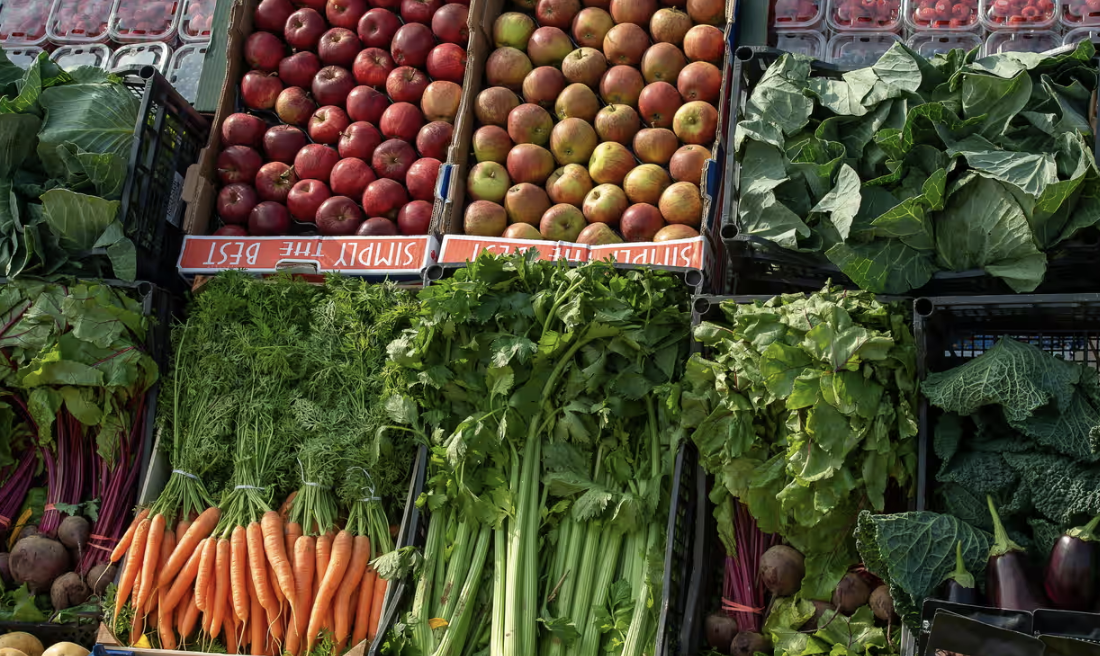Feeding the Future: Redefining the Student Dining Experience in Austin, Texas
Lindsey Bradley
What comes to mind when you think of food in school? For many of us, our perceptions reflect childhood memories or misconceptions. Today, school districts across the country are shifting their efforts to innovate the student dining experience, providing fresher, healthier foods that are sourced locally and sustainably.
Austin Independent School District (Austin ISD) is the fifth-largest school district in Texas, serving nearly 75,000 students at 125 schools. At Austin ISD, food service is about more than just feeding students. Our mission is to support the achievement of all students by expanding food access, serving healthy, tasty meals, and providing learning opportunities about nutrition, cultural foodways, and the food system.
Access to Healthy Meals for All
More than two-thirds of Austin ISD students identify as economically disadvantaged. Given this, expanding access to healthy food is a top priority. We want our students’ dining experience to remind them that they belong to a community that values them. Through programs like breakfast in the classroom, family-style dining, mobile food trucks, vending machines, and mini markets, we are bringing nutritious meals to students in a convenient way using service methods not typically seen in schools.
Family-Style Dining
When you think about dining with family and friends, it’s common to visualize a scene of dishes passed around the table, good conversation, and laughter. Through an elementary school family-style dining pilot, Austin ISD is bringing this comforting experience to meal times at school. Our pilot program includes a combination of students dining in the café (our name for cafeterias) and in classrooms. Family-style dining creates an inviting environment, allowing students to build community and independence as they break bread with their peers. Students help set the table, use reusable plates and cutlery, and serve themselves the foods of their choice, all while sharing among classmates and nurturing valuable life skills. While it does take some time to acclimate students to this dining style, with campus support, this approach ultimately increases access to healthy food in a calm, educational manner.
Food Trucks
Mirroring a prominent part of Austin’s food culture, our Nacho Average and Food 4 Thought mobile food trucks provide a unique dining experience for many of our students. The food trucks rotate daily among Austin ISD high schools and visit elementary and middle schools upon request. While many high schools allow upperclassmen the option to leave campus for lunch, our food trucks provide a healthy and safe alternative that’s beneficial for students and educators. Students dine at the food trucks using their meal account status – free, reduced-price, or paid – just as they would in our cafés. Food truck menus feature unique, globally-themed dishes such as burgers, sandwiches, soups, and baked potatoes.
Vending Machines and Mini Markets
In addition to food trucks, our dispersed dining pilot uses vending machines and mini market concepts to increase food access for high school students. These concepts provide students with the option of healthy, visually appealing meals outside of our cafés, served in convenient locations around campus. Vending machines and mini markets feature entrees not regularly offered in the cafés, in addition to fresh fruits, vegetables, and milk. Meals are prepared and packaged in-house and served in retail packaging that students are more likely to associate with food outside of school.
Food Access and COVID-19
Many of our students’ families regularly rely on school meals, and COVID-19 has amplified the need for accessible, healthy food. When campuses closed in March 2020, we immediately began serving free meals at curbside locations throughout Austin. To provide additional support for families we work with local restaurants to provide free caregiver meals, as well as Texas farmers to provide local produce boxes. We also partner with the Central Texas Food Bank to provide free meals for children and caregivers at their mass food distribution events conducted during school breaks, such as Thanksgiving, spring break, and over the winter holiday. We’ve served more than two million curbside meals since March and will continue to offer this service as long as there’s a need and we can do so in compliance with the U.S. Department of Agriculture.
A Commitment to Serving Healthy, Sustainable Food
Students are exposed to healthier foods at school, thanks to the strengthening of nutrition guidelines through the Healthy, Hunger-Free Kids Act of 2010. No matter where or how meals are served, at Austin ISD we strive to exceed these guidelines, especially when it comes to fresh produce. Through a multi-year rollout, all schools now offer a daily salad bar option, rotating components through weekly themes. We’ve found that when we offer fruits and vegetables that are local, fresh, and appealing in sight and smell, students are more likely to add them to their trays and enjoy them as part of their meal.
In addition to fresh produce, our menus regularly feature scratch-prepared dishes. For many school districts, the thought of scratch cooking may be daunting. However, transitioning to this cooking method allows us to offer less processed, clean label foods while reducing waste. Following the Ingredient Guide for Better School Food Purchasing by School Food Focus, we define clean label foods as those that don’t include any ingredients on the guide’s unwanted list and avoid ingredients on its watch list.
Much of our scratch cooking efforts focus on plant-forward foods and global flavors – think vegan lentil chili Frito pie and Indian vegetable curry. We offer plant-based options daily at all schools. Knowing many children may not be familiar with these foods, all cafés conduct sampling events throughout the school year, allowing students to try new dishes the day before they appear on the menu.
Good food procurement is essential in developing menus that align with our values. Leveraging outside partnerships provides support in creating a framework to guide change. Austin ISD is the first district in Texas to adopt the Good Food Purchasing Program. This program helps large institutions shift their buying power toward five core values: local economies, environmental sustainability, valued workforce, animal welfare, and nutrition. By making our vendors aware of the direction our purchasing efforts are headed, they’re making changes to their products and practices and creating more good food options not only in Austin, but for schools across the country.
At Austin ISD, nearly half of our food budget is spent within the state of Texas. Local sourcing not only impacts the economy, but also provides opportunities to educate students and staff about the food system. In addition to regularly featuring local foods on our menus, we also work with our Texas partners to conduct sampling and education opportunities throughout the year. Local partners connect with students during meet-the-farmer visits, sharing the benefits of eating locally. Through an annual art contest, held each October during Farm to School Month, we encourage classrooms to get creative with a featured local, Farm Fresh Friday vegetable. We recently highlighted our commitment to local foods in a short documentary, Source to School: Inside Austin ISD Food Service.
As Austin ISD works to modernize schools and construct new buildings, food service is included in these planning processes to support overall zero-waste and sustainability goals. These schools offer self-serve options, organic bulk milk, compostable materials, and reusable trays, plates, bowls, cups, and cutlery. Students also learn valuable life skills as they assist with waste sorting after finishing their meal.
“In Austin ISD, we are inspired by the progress we have made in creating desired dining destinations while positively impacting the food system,” said Anneliese Tanner, Executive Director of Food Service and Warehouse Operations at Austin ISD. “Serving around 13 million meals annually, we believe our commitment to sustainability is truly making a difference and influencing change for future generations.”
Authentic Learning Experiences Elevate Nutrition Education
At Austin ISD, we work collectively to support the whole child. When it comes to food and nutrition, our cafés become classrooms where we help students create healthy relationships with food. One way we’ve extended nutrition lessons to meal times is made possible via a partnership with health and physical education teachers. Using a framework developed by the Coordinated Approach to Child Health, we identify foods as GO, SLOW, and WHOA, using labels adhered to the serving line. We find students making healthier food choices as they become familiar with this messaging and see it used throughout campus.
While it’s critically important for students to learn how food fuels their bodies, it’s also vital they understand where it comes from. Ninety-three of our campuses offer students opportunities to connect with nature and the food system through school gardens. Our Garden to Café program provides guidelines for campuses to safely serve school garden-grown foods in their cafes. This allows students to experience the seed-to-plate process, which gets them excited to eat and share the foods they’ve grown and harvested.
Culinary competitions are a creative way to get students excited about nutrition and food. In 2017, we introduced Diced & Sliced, a competition that brings together middle school culinary students from across the district. Our dietitian and chef team engage with classes and assist with recipe development and culinary skills, while introducing students to the positive changes that have been made around food and school meals. Competitions are themed, such as tacos and pasta, and recipes require the use of a protein, grain, and vegetable. Student groups compete at the classroom and school levels, with the winning dishes advancing to the final competition held at the Austin Community College Culinary Arts Facility. The final competition, broadcast live on AISD.TV, allows families and classmates to observe the students preparing their dishes and presenting them to a panel of celebrity judges. We celebrate the winning team by featuring their recipe on all menus the following school year.
Pursuing Further Change, One Meal at a Time
Changing the perception and stigmas associated with food at school takes creativity, patience, and community support. Through dining innovations, creating fresher menus, and sustainable purchasing, Austin ISD is making progress. It may seem trivial, but even a shift from traditionally institutional terminology (e.g., using café versus cafeteria), helps move perceptions forward.
At Austin ISD, we encourage all students to dine at school, no matter their economic status. As a federally funded program, with reimbursement for each meal served, the more students who eat with us the more funding we have to invest in the quality of our food. In 2019, we introduced a collective impact campaign to educate families on how making the choice to dine at school brings better food to all students. If every student who didn’t regularly eat lunch with us ate once per week, we could serve all students grass-fed beef; twice per week, we could serve all organic produce; and three times per week, we could serve all organic milk. Through an increase in student meal participation, we’ve made progress in all three areas and we continue to be committed to these goals.


